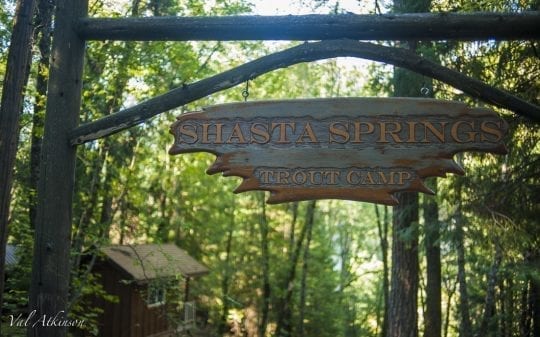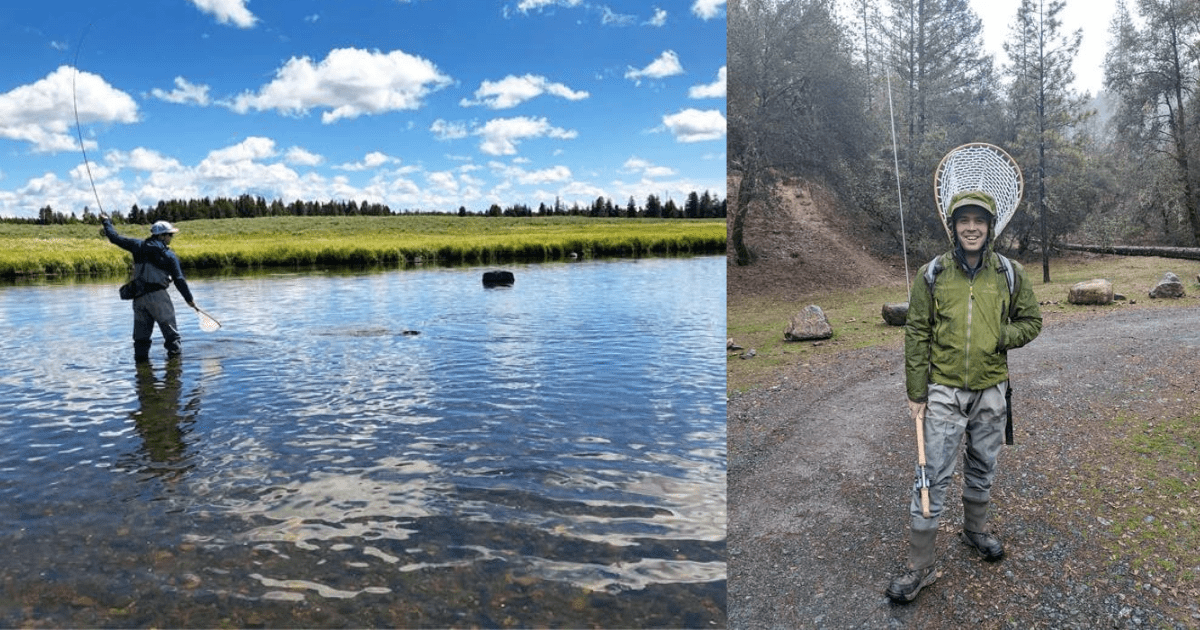Meet CalTrout’s Next Cast Member: Kel Mitchell
 CalTrout’s Next Cast is a group of young professionals (ages 18-40), that represent the next generation of anglers, conservationists, and CalTrout supporters.
CalTrout’s Next Cast is a group of young professionals (ages 18-40), that represent the next generation of anglers, conservationists, and CalTrout supporters.
Members like Kel Mitchel meet to discuss conservation efforts across CA, engage in events within the Bay Area, and receive invites to CalTrout’s Trout Camp property on the Upper Sac – all while building their network with like-minded outdoor enthusiasts. If you’d like to learn more about the Next Cast group feel free to contact Casey O’Sullivan (cosullivan@caltrout.org).
Here, we catch up with Next Cast member Kel Mitchel to learn more about him.
Kel! Thanks for agreeing to tell us your CalTrout story! I know you’re a part of the Young Professionals group here. Tell us how you got started.
My uncle made me aware of CalTrout in 2016. As soon as I browsed the website, I knew it was an organization I could get behind. It’s the only organization I can find that brings together my personal passions of fly fishing, water, and conservation. Not only that, but the CalTrout staff joins the conservation and water worlds together in a way that is non-adversarial, which often seems to be the case. Finally, it’s a fantastic group of donors, partners, and others who all share similar interests and dedication to preserving California’s wild waters.
Well said! We’re glad to have members like you that share the same vision: fishing and water conservation! Speaking of, how long have you been fly fishing?
I’ve been fly-fishing since my grandfather and my dad put a rod in my hand on the Snake River when I was ten or so years old. Every year after that, my family and I would make an annual trip to fly fish, among other activities, in Idaho, Wyoming, and Montana. It wasn’t until college, however, when I realized that fly fishing was something I could do on my own – not just with family. After spending a week fishing the Owens River in January, 2013, I’ve spent too many weekends to count exploring all of our wonderful rivers in California. Rivers, fish, and fly fishing ultimately helped me land in my current profession working in the water world. It goes without saying that fly fishing has had a major impact on various aspects of my life.
Sounds like a fishy family! Any favorite stories to tell?
I don’t think I can ping one specific fly fishing adventure or day as a favorite. As I think about the many years of these trips, each one that comes to mind brings a smile to my face. But, it’s not the fish themselves for which I’m smiling, but company with whom I shared the experience. I will never forget hiking in 20 miles to the South Fork of the Kings River, with one of my best pals, who was a relatively new fly fishing addict. We’d been out a number of times, catching small fish on little creeks around California. But this time was different. We were tired from the hike, annoyed at the mosquitos, scratched from the mile walk through prickly bushes. But, as soon as our lines hit the water and the fish rose on our first casts, we couldn’t help but smile at each other, overjoyed to feel cold water on our exhausted toes, look up at towering granite, and to be alone in the Sierra with a bunch of fish to keep us happy. This is just one story of dozens that I could recount where the common thread of close friends runs through. I don’t think any fishing adventure would be the same without an amazing company to explore with.
The magic of the Sierra! So, let me ask, why CalTrout?
There’s not a single CalTrout project that doesn’t hype me up – maybe that’s just a function of the enthusiasm of the project directors when I hear about the work. The one that I’m really ecstatic about is the work in the upper reaches of the Klamath, where CalTrout is partnering with ranchers to incentivize and implement new water diversion and storage methods to promote cold water flows and habitat for migrating Salmonids. To me, this project is so emblematic of the little tiny bits of difficult effort that add up into a major success. I don’t know all of the ins-and-outs of this work, but I imagine that even starting the conversation with landowners was difficult. And to have this lead to tangible results where everyone is happy is truly an inspiration. I’m optimistic that it serves as a template for future work around California – and the rest of the U.S. – where partnerships and collaboration between frequently conflicting viewpoints lead to amazing results. Fish, Water, People, right?
What is it about CalTrout’s work that you find most inspiring?
CalTrout’s long record of success is the most inspiring part of the organization. Because there is so much work that needs to be done to lead to healthier watersheds and Salmonid populations, I find it critical to look back on what’s been done as a point of optimism for the future. This takes numerous forms. The science-based research on the Sacramento River is just the tip of the iceberg on other projects that will rely on amazing biologists and other researchers to implement successful policy. The numerous instances of CalTrout’s cleaning up riverbeds and removing barriers to allow fish passage are the framework for what I know will be many more down the road. And the judicial win around Mono Lake serves as hope that if collaboration and cooperation don’t work out, then CalTrout will take the necessary issues to be sorted out by the law. These examples, and many more, are the inspiration for an amazing future of spectacular work from CalTrout.
What does being a CalTrout member mean to you?
Being a CalTrout member is the way that I get to give back and be grateful for the tremendous amount of fun I have fly-fishing. As I simply pull up to a river to cast my line, it’s easy to take for granted that California’s rivers are so spectacular. But, without people like the CalTrout staff, these waters might not be as accessible or healthy as they are. Since much of fly-fishing in California is free (aside from the gear, of course) and access is just through public lands, my CalTrout membership feels like my way to pay my dues to ensure that future generations can have as much fun as I have throughout my life.
Well said. Getting to know you has been great! Before we go, what’s your favorite river in CA?
I’m not sure if there’s a river in California where I have a bad memory. And, having seen most rivers in California, they all have a special place in my heart. Some of them I love because of lost fish or skunked days where I’m haunted and need to go back for another day of angling. Others are special because of the surprise catch or the amazing scenery. Many more are just special water because I saw someone else have their best day of fishing – or sometimes the first day of fishing. Most important of all, for me, however, is the Kern River. It’s the first river in California I truly explored from top to bottom, the place I still can’t figure out how to successfully fish, the watershed that’s home to the most gorgeous native trout in the world, and the river that led me on my professional journey to the career I’m in now. Without the Kern, there is no way I could have begun to appreciate the other pieces of amazing water in California that I’ve grown to love and I don’t imagine I would have stumbled onto CalTrout, something for which I’m incredibly grateful now.






